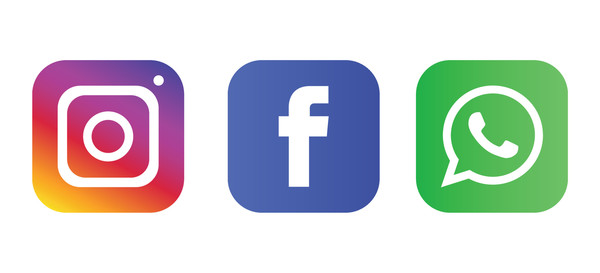Many Korean people just love uploading their V-log on YouTube, writing Naver V-log Challenges or using other social media, often described as a writing fever. In the past, we just wrote a diary or took a photo to record the moment that we wanted to remember. However, for modern people who are accustomed to using social networking services, it is much more useful to use those accounts as their archive. They record their life and share them with acquaintances while hopefully getting many ‘likes’. In this situation, various social media platforms employ many marketing strategies to capture the attention of modern people. What are the main reasons this ‘record craze’ is sweeping across Korea? Today, let’s explore this in detail, with CAH.

Why Do People Look at Other’s Daily Lives?
The Viewer’s Position
Modern people draw strength from documenting their daily lives through various media and sharing it with many people. So why do people enjoy observing the daily lives of others? In an interview with Yon-hap News Agency in July, the director of Media Psychology Research Institute, Jo Yeon-joo pointed out a key factor behind the popularity of ‘vlogs,’ which serve as a medium for daily life documentation. She mentioned that unlike observation entertainment programs on ‘legacy media’ that feature only specific celebrities, vlogs allow anyone to choose the vloggers they prefer to watch. In other words, unlike mainstream broadcasts, vlogs offer a much more tailored experience, where individuals can select videos in their area of interest and look into the lives of various people with much more relevant subject matter. She also said that because it provides an opportunity to peer into the lives of others, people can satisfy their curiosity, encounter diverse lifestyles, and gain practical knowledge.
The Creator’s Position
The demand for sharing everyday life experiences with the public remains consistent, and from the creator’s perspective, supplying content through social media is much less burdensome than through other media. It is because it lowers the psychological barriers to entry by not requiring professional editing skills, elaborate layouts, or flashy visuals as traditional broadcasting does. As a result, many ordinary individuals are engaged in creative activities, and their videos capturing their daily lives resonate more with viewers due to their authenticity. Throughout history, the motivation for self-expression has been the primary driving force behind media consumption, with differences in the modes of expression evolving alongside changes in media environments. Today, with the continued development of media types, it is predicted that more creators who desire to express themselves will emerge. ITsub, who ranked 75th in Forbes Korea's 2022 list of Power YouTubers, stated in an interview with Forbes in 2022, "I liked electronic devices since middle school. I spent time touching, dismantling, assembling, and examining them. That's why I had confidence that I could share my experiences with electronic devices better than anyone else. However, the image of myself living as an ordinary office worker never crossed my mind." He now works as a tech YouTuber, showcasing his passion for what he loves to do to the public.

The Psychological Factors
- Voyeurism
Voyeurism, characterized by an interest in observing a series of actions performed by others, is gaining attention as a psychological factor within the realm of media. In the past, when access to media was not as readily available, those who appeared in mass media were limited to celebrities or other publicly well-known individuals. However, as time passed, media has gradually developed, making it easier for the general public to engage with, and expanding the range of its activities. In such a context, voyeuristic desires have become a form of behavior that can be enjoyed as a popular pastime among the public.
Voyeurism, in the sense of peeking into the daily lives of others, has its roots in the desire to assess one's social position and affirm one's identity through comparison. [1] Media figures who are easily relatable as someone’s ‘aspiration,’ stimulate audiences who attempt self-improvement by comparing themselves with these individuals. According to the findings of a research paper[2], when investigating the motivations of web users, ‘voyeurism’ was identified as a significant factor in increasing their satisfaction with the usage.
The First-Generation Social Networking Platforms Showing A Fresh Vitality: Naver Blog

Blogs, a type of social network that almost faded into obscurity due to the dominance of platforms like Instagram and YouTube, are experiencing a resurgence. Naver Blog initially launched in 2003 under the name ‘Paper,’ is an internet service that continues to operate to this day. However, it seemed to lag behind various internet media that allowed rapid two-way communication. Still, it is making a comeback, emphasizing the advantage of reduced pressure for ongoing communication when interacting with specific neighbors. Naver is actively boosting its popularity by promoting ‘challenge’ events such as the ‘Weekly Diary’ challenge and the ‘Check-In’ challenge, where users are rewarded based on their achievements for posting regularly. The opportunity to document our own daily lives through challenges and receive rewards for it is becoming another appealing factor for the high self-fulfillment desire of the new generation. Kim Bo-yeon, the team leader of the Naver Blog Team, shared her perspective in an interview with Maeil Business in 2021 stated, "Blogs have the unique feature of allowing individuals to share their daily lives while maintaining a certain distance from others. This is why blogs are gaining popularity among the youth who desire a 'loose sense of solidarity.'"

Considering the nature of time, which passes and never returns, earnestly living one's given life and documenting one's self through various media can be not only romantic but also a very rewarding activity. However, it's important to be cautious about obsessively recording activities simply to follow trends, as it might lead to losing the preciousness of genuine everyday moments. How about our CAH readers trying to record your most beautiful moments in various ways?
[1] Lee, Jang-Suk, & Sung, Dong-Kyoo (2022). How Have Vlogs Become the Culture of the MZ Generation? The Effects of Voyeurism in YouTube Vlogs on Empathy, Viewing Satisfaction and Continuous Viewing Intention. Journal of Korea Culture Industry, 22(4), 115-123, 10.35174/JKCI.2022.12.22.4.115
[2] Ji-Young Youn, Ji-Yoon Yoo, & Jang-Suk Lee (2020). The Effect of Motivation and User Characteristics on Use Satisfaction and Continuous Use Intention in YouTube Vlog. JOURNAL OF THE KOREA CONTENTS ASSOCIATION, 20(4), 189-201.

